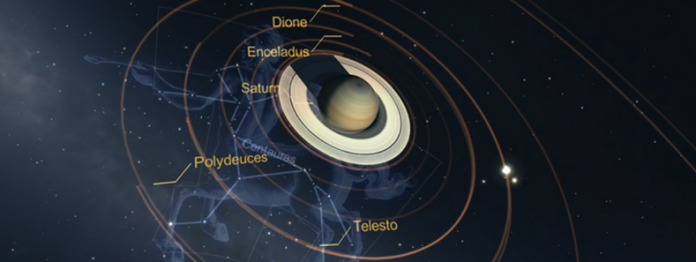The ability virtual reality (VR) has to transport viewers to far off locations they might not/never be able to get to is one of the technologies greatest draws. When VR first properly re-emerged a few years ago one of the first places developers looked to virtually re-create was space, somewhere very few of us will ever go. There are a number of exploratory space apps available, one of which is Star Chart. The app first arrived on Samsung Gear VR earlier this year, with support then being added for Google Cardboard. Now the experience has arrived for Oculus Rift.
Star Chart is a real time simulation of our solar system. It allows viewers to explore right from the centre, detailing the Sun and nearby planets Mercury and Venus, all the way out to the cold, dark reaches of Neptune and Pluto. Look at the rings of Saturn or study the moons of Jupiter, with surface data on the rocky planets and moons. The constellations are also featured, the all 88 based on the artwork of 17th century astronomer Johannes Hevelius.
The app can be downloaded through Oculus Home for $9.99 USD/£7.99 GBP and features one of the biggest set of language options for any VR title. These include: English; Chinese (China, Taiwan, Hong Kong); Danish, French; German; Japanese; Korean; Norwegian and Spanish.
Or if you prefer to explore the deep blue sea World of Diving also launch for the Oculus Rift head-mounted display (HMD) this week. This has an emphasis of multiplayer, giving players underwater vehicles, cameras and other tools to salvage and catalogue the mysterious seas. It’s also in the Oculus Summer Sale until 5th July, selling for $11.99/£8.79 before returning to the regular price of $19.99/£14.99
VRFocus will continue to cover all the latest releases on Oculus Rift, reporting back with any new content additions.















